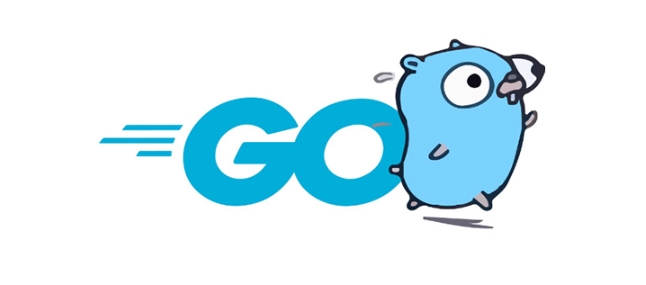What is type assertion and how does it work in Go?
Jul 31, 2025 am 10:32 AMType assertion in Go allows safely extracting the concrete value from an interface by checking its underlying type, using either the two-value form to avoid panics or direct assertion when the type is certain. 1. Use the safe two-value form: value, ok := interfaceVariable.(Type), where ok is true if the assertion succeeds. 2. Avoid the single-value form: value := interfaceVariable.(Type), as it panics if the type is incorrect. 3. Apply type assertions with custom interfaces to access methods beyond the interface definition, such as asserting a concrete type like Dog from a Speaker interface to call Fetch(). 4. Prefer type switches when handling multiple types, using switch val := v.(type) to cleanly branch on string, int, bool, or default cases. Always favor safety, use type assertions judiciously, and consider interfaces or generics for better design.

Type assertion in Go is a way to check the underlying type of an interface value or to extract the concrete value stored inside an interface. It's commonly used when you're working with interface{} (empty interface) or interface types and need to access the actual data or call methods that aren't part of the interface definition.

How Type Assertion Works
In Go, interfaces store both a concrete type and a value. Type assertion allows you to "assert" that the stored type is what you expect and retrieve its value.
The basic syntax is:

value, ok := interfaceVariable.(Type)
Or, if you're confident about the type:
value := interfaceVariable.(Type) // panic if wrong type
Let’s break this down.

1. Safe Type Assertion (with two-value form)
This is the safe way — it checks whether the interface holds the specified type.
var i interface{} = "hello"
s, ok := i.(string)
if ok {
fmt.Println("It's a string:", s)
} else {
fmt.Println("It's not a string")
}swill hold the value if the assertion succeeds.okis a boolean indicating whether the type was actuallystring.
This pattern is widely used because it prevents panics.
2. Direct Type Assertion (can panic)
If you skip the ok check and the type is wrong, your program will panic:
var i interface{} = 42
s := i.(string) // PANIC: interface holds int, not stringSo always use the two-value form unless you're certain of the type.
3. Using Type Assertion with Custom Interfaces
Suppose you have an interface with limited methods, but you know the underlying type has more functionality:
type Speaker interface {
Speak() string
}
type Dog struct{}
func (d Dog) Speak() string { return "Woof" }
func (d Dog) Fetch() string { return "Fetching!" }
var s Speaker = Dog{}
// Assert that s is actually a Dog
if dog, ok := s.(Dog); ok {
fmt.Println(dog.Fetch()) // Now we can call Fetch()
}Here, Speaker doesn't have Fetch, but by asserting the concrete type, we gain access to it.
4. Type Switch – A Cleaner Alternative for Multiple Types
When checking multiple possible types, a type switch is often cleaner:
func do(v interface{}) {
switch val := v.(type) {
case string:
fmt.Println("String:", val)
case int:
fmt.Println("Int:", val)
case bool:
fmt.Println("Boolean:", val)
default:
fmt.Println("Unknown type")
}
}The v.(type) syntax only works inside switch statements and lets you handle each case safely.
Key Points to Remember
- Type assertion only works on interface types.
- Always prefer the two-value form (
value, ok) in production code. - Avoid direct assertions unless you control the input.
- Use type switches when dealing with multiple possible types.
- A failed assertion in single-value form causes a runtime panic.
Type assertion is powerful but should be used carefully. Overuse might indicate a design that could benefit from better structuring with interfaces or generics (available since Go 1.18).
Basically, it’s Go’s way of saying: “I know this interface holds a specific type — let me get it out safely.”
The above is the detailed content of What is type assertion and how does it work in Go?. For more information, please follow other related articles on the PHP Chinese website!

Hot AI Tools

Undress AI Tool
Undress images for free

Undresser.AI Undress
AI-powered app for creating realistic nude photos

AI Clothes Remover
Online AI tool for removing clothes from photos.

Clothoff.io
AI clothes remover

Video Face Swap
Swap faces in any video effortlessly with our completely free AI face swap tool!

Hot Article

Hot Tools

Notepad++7.3.1
Easy-to-use and free code editor

SublimeText3 Chinese version
Chinese version, very easy to use

Zend Studio 13.0.1
Powerful PHP integrated development environment

Dreamweaver CS6
Visual web development tools

SublimeText3 Mac version
God-level code editing software (SublimeText3)

Hot Topics
 How does the switch statement work in Go?
Jul 30, 2025 am 05:11 AM
How does the switch statement work in Go?
Jul 30, 2025 am 05:11 AM
Go's switch statement will not be executed throughout the process by default and will automatically exit after matching the first condition. 1. Switch starts with a keyword and can carry one or no value; 2. Case matches from top to bottom in order, only the first match is run; 3. Multiple conditions can be listed by commas to match the same case; 4. There is no need to manually add break, but can be forced through; 5.default is used for unmatched cases, usually placed at the end.
 How to use reflection in Go?
Jul 28, 2025 am 12:26 AM
How to use reflection in Go?
Jul 28, 2025 am 12:26 AM
Usereflect.ValueOfandreflect.TypeOftogetruntimevaluesandtypes;2.Inspecttypedetailswithreflect.TypemethodslikeName()andKind();3.Modifyvaluesviareflect.Value.Elem()andCanSet()afterpassingapointer;4.CallmethodsdynamicallyusingMethodByName()andCall();5.R
 how to break from a nested loop in go
Jul 29, 2025 am 01:58 AM
how to break from a nested loop in go
Jul 29, 2025 am 01:58 AM
In Go, to break out of nested loops, you should use labeled break statements or return through functions; 1. Use labeled break: Place the tag before the outer loop, such as OuterLoop:for{...}, use breakOuterLoop in the inner loop to directly exit the outer loop; 2. Put the nested loop into the function, and return in advance when the conditions are met, thereby terminating all loops; 3. Avoid using flag variables or goto, the former is lengthy and easy to make mistakes, and the latter is not recommended; the correct way is that the tag must be before the loop rather than after it, which is the idiomatic way to break out of multi-layer loops in Go.
 How to handle timeouts in Go?
Jul 27, 2025 am 03:44 AM
How to handle timeouts in Go?
Jul 27, 2025 am 03:44 AM
Usecontext.WithTimeouttocreateacancellablecontextwithadeadlineandalwayscallcancel()toreleaseresources.2.ForHTTPrequests,settimeoutsusinghttp.Client.Timeoutorusecontextviahttp.NewRequestWithContextforper-requestcontrol.3.Ingoroutineswithchannels,usese
 Using the Context Package in Go for Cancellation and Timeouts
Jul 29, 2025 am 04:08 AM
Using the Context Package in Go for Cancellation and Timeouts
Jul 29, 2025 am 04:08 AM
Usecontexttopropagatecancellationanddeadlinesacrossgoroutines,enablingcooperativecancellationinHTTPservers,backgroundtasks,andchainedcalls.2.Withcontext.WithCancel(),createacancellablecontextandcallcancel()tosignaltermination,alwaysdeferringcancel()t
 Efficient JSON Parsing and Manipulation in Go
Jul 27, 2025 am 03:55 AM
Efficient JSON Parsing and Manipulation in Go
Jul 27, 2025 am 03:55 AM
UsestructswithPERJSontagsFeRpredictabledatoensurefast, safeparsingwithcompile-timetypesafety.2.avoidmap [string] interface {string] interface {string] interface {string] interface {string] interface {string] interface {string] interface {string] interface {string] interface {string] interface {string] interface {string] interface {string] interface {string] interface {string] interface {string] interface {string] interface {string] interface {string] interface {string] interface {string] interface {string] interface {string] interface {string] interface {string] interface {string] interface {string] interface {string] interface {string] }duetoreflectionoverheadandruntimetypeassertionsunlessdealingwithtrulydynamicJSON.3.Usejson.RawMessagefordeferredorselectivep
 Building a GraphQL Server in Go
Jul 28, 2025 am 02:10 AM
Building a GraphQL Server in Go
Jul 28, 2025 am 02:10 AM
InitializeaGomodulewithgomodinit,2.InstallgqlgenCLI,3.Defineaschemainschema.graphqls,4.Rungqlgeninittogeneratemodelsandresolvers,5.Implementresolverfunctionsforqueriesandmutations,6.SetupanHTTPserverusingthegeneratedschema,and7.RuntheservertoaccessGr
 Performance benefits of switching to Go
Jul 28, 2025 am 01:53 AM
Performance benefits of switching to Go
Jul 28, 2025 am 01:53 AM
Gooffersfasterexecutionspeedduetocompilationtonativemachinecode,outperforminginterpretedlanguageslikePythonintaskssuchasservingHTTPrequests.2.Itsefficientconcurrencymodelusinglightweightgoroutinesenablesthousandsofconcurrentoperationswithlowmemoryand






